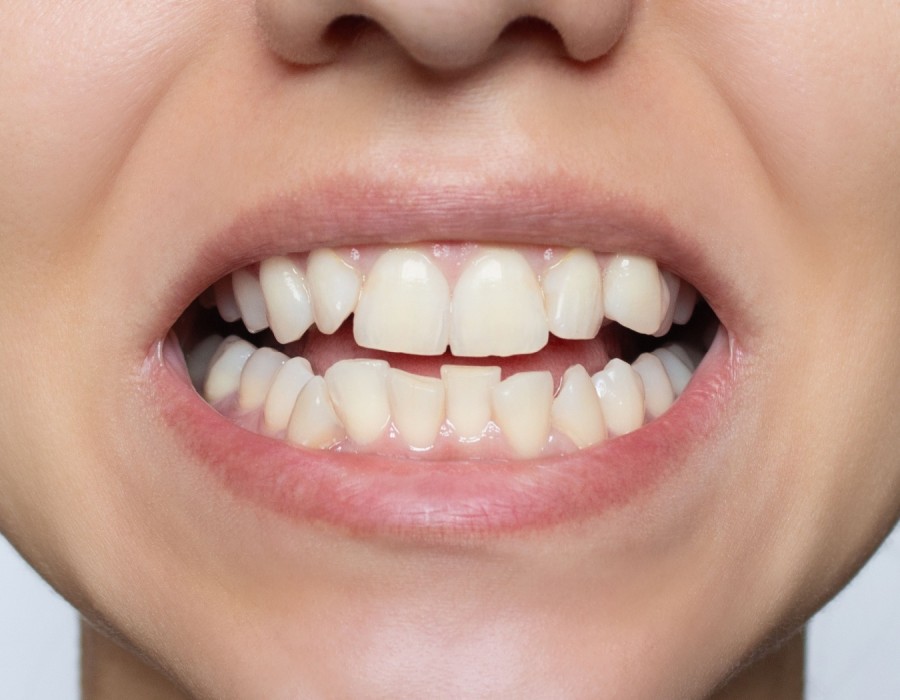Overlapping teeth can be an aesthetic and functional concern for many individuals. Whether caused by genetics, poor oral habits, or a lack of proper dental care, this condition can impact one's smile and overall dental health. Fortunately, fixing overlapping teeth is possible, and various treatments are available depending on the severity of the problem. In this comprehensive guide, we will explore how to fix Overlapping Teeth Treatment, the causes, and the treatment options available.
Understanding the Causes of Overlapping Teeth:
Before diving into treatment options, it's essential to understand why teeth overlap in the first place. Several factors contribute to this dental condition, including:
- Genetics: In many cases, overlapping teeth are hereditary, meaning they are passed down through generations.
- Crowded Mouth: A small jaw or inadequate space in the mouth can lead to crowded teeth, causing them to overlap.
- Thumb Sucking: Persistent thumb sucking during childhood can affect the alignment of teeth and lead to overlap.
- Early Loss of Baby Teeth: Losing baby teeth prematurely can cause permanent teeth to come in crooked, resulting in overlapping.
- Improper Dental Care: Lack of regular dental checkups, brushing, and flossing can exacerbate alignment issues, including teeth overlap.
By identifying the root cause of overlapping teeth, a more targeted approach to treatment can be applied.
Treatment Options for Fixing Overlapping Teeth:
There are several effective treatments for overlapping teeth, and the best option depends on the severity and individual needs. Here are some of the most common methods:
Braces:
Braces are one of the most widely used and effective treatments for overlapping teeth. They work by gradually shifting the teeth into proper alignment using brackets and wires. Braces may take anywhere from several months to a few years to fully correct the teeth, but they are highly effective at fixing even severe cases of overlapping teeth.
- Traditional Metal Braces: These are the most common type, known for their strength and durability.
- Ceramic Braces: These work similarly to metal braces but are less noticeable due to their tooth-colored brackets.
Clear Aligners:
Clear aligners, like Invisalign, are a popular alternative to traditional braces. They are made of clear plastic and are custom-fit to your teeth. Aligners are nearly invisible and can be removed for eating and cleaning, making them a convenient choice for those who want a more discreet option. Treatment with clear aligners typically takes less time than with braces.
- Convenient: Easy to remove for eating and cleaning.
- Discreet: Clear and nearly invisible, making them ideal for adults and those who prefer a subtle treatment option.
Veneers:
For minor overlapping or misalignment, dental veneers can be an excellent cosmetic solution. Veneers are thin shells of porcelain or composite resin that are bonded to the front of the teeth to improve appearance. This option does not move the teeth but can significantly enhance the smile, providing an instant fix to mild overlaps.
- Quick Results: Veneers provide a fast cosmetic fix.
- Non-Invasive: They require little to no alteration of the natural tooth structure.
Retainers:
Retainers are often used after braces or aligner treatments to help maintain the new position of the teeth. In some cases, a retainer might be recommended as the primary treatment for minor overlapping. Retainers are typically custom-made to fit the teeth and are worn at night or during the day, depending on the specific case.
- Prevent Shifting: Retainers help keep teeth in their new position after other treatments.
- Non-Invasive: Retainers are less intrusive than other options like braces.
Tooth Extraction:
In severe cases of crowded teeth, a dentist or orthodontist might recommend extracting one or more teeth to make room for the remaining teeth to align properly. This is typically a last resort when there is not enough space in the mouth for all of the teeth to fit properly.
- Space Creation: Tooth extraction creates room for better alignment.
- Possible Discomfort: Extraction can be uncomfortable and requires recovery time.
Aftercare for Overlapping Teeth Treatment:
Once you’ve chosen your preferred treatment for fixing Overlapping Teeth, it’s essential to follow aftercare instructions carefully to ensure the best results. Here are some aftercare tips:
- Maintain Oral Hygiene: Regular brushing and flossing are crucial, especially after braces or aligner treatments, to prevent plaque buildup.
- Attend Follow-Up Appointments: Consistently attending checkups ensures the treatment is progressing as expected.
- Wear Retainers: After braces or clear aligners, wearing a retainer as instructed helps maintain the alignment achieved during treatment.
Conclusion:
Fixing overlapping teeth is possible through various treatment options, ranging from braces and clear aligners to veneers and tooth extraction. The best approach depends on your specific situation, and a consultation with a qualified dentist or orthodontist is key to determining the ideal solution for you. With proper care and attention, you can achieve a beautiful, healthy smile that enhances both your appearance and confidence.
If you're struggling with overlapping teeth, don't hesitate to seek professional advice and explore the treatment options available to you. Your path to a straighter smile can begin today!





Comments